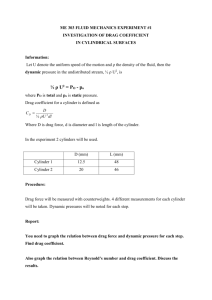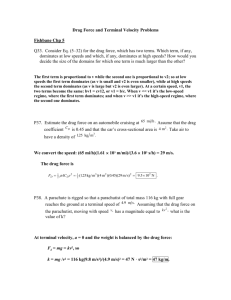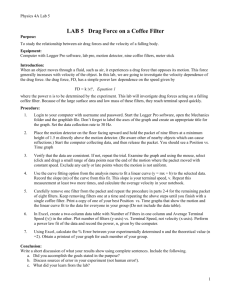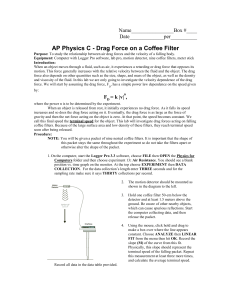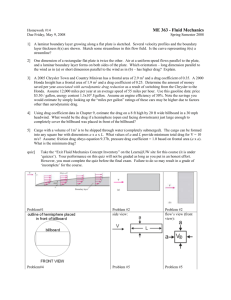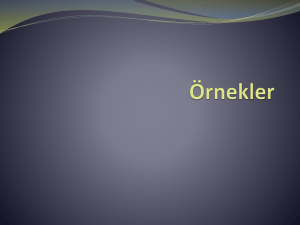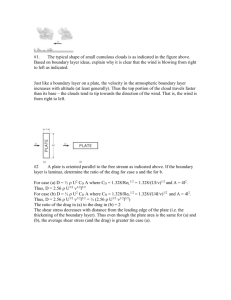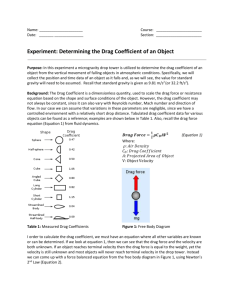MIT Resistive Forces – Practice
advertisement
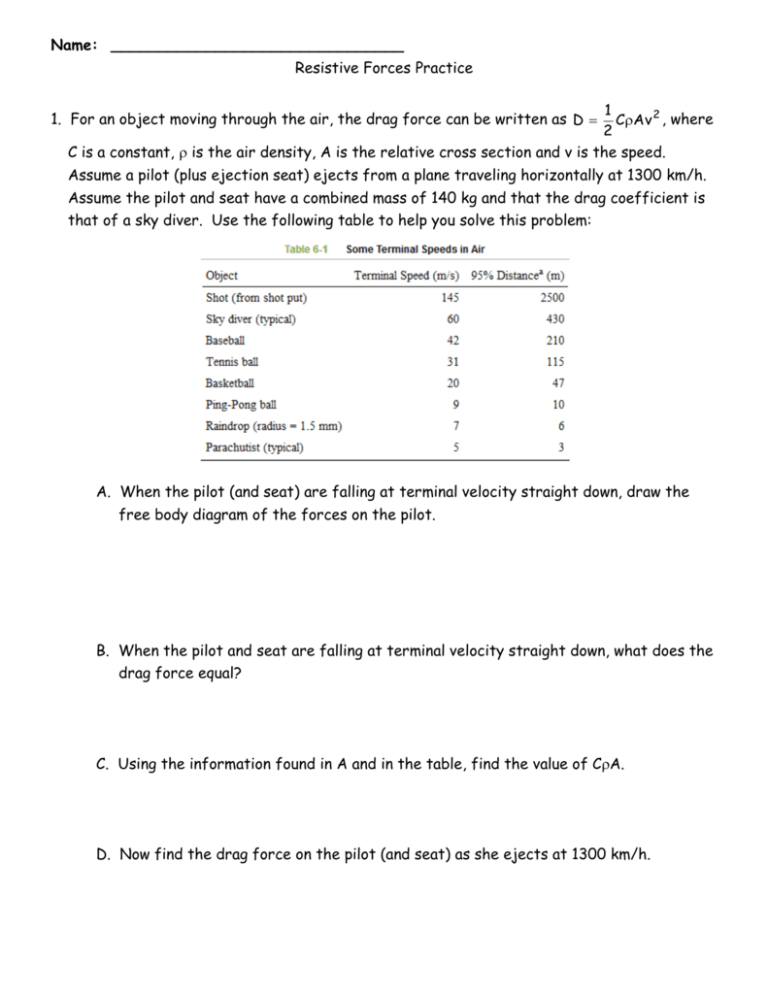
Name: _______________________________ Resistive Forces Practice 1 CAv 2 , where 2 C is a constant, is the air density, A is the relative cross section and v is the speed. 1. For an object moving through the air, the drag force can be written as D Assume a pilot (plus ejection seat) ejects from a plane traveling horizontally at 1300 km/h. Assume the pilot and seat have a combined mass of 140 kg and that the drag coefficient is that of a sky diver. Use the following table to help you solve this problem: A. When the pilot (and seat) are falling at terminal velocity straight down, draw the free body diagram of the forces on the pilot. B. When the pilot and seat are falling at terminal velocity straight down, what does the drag force equal? C. Using the information found in A and in the table, find the value of CA. D. Now find the drag force on the pilot (and seat) as she ejects at 1300 km/h. E. Find the horizontal acceleration (i.e. deceleration) just after ejection. 2. In downhill speed skiing, a skier is retarded by both the air drag force on the body and the kinetic frictional force on the skis. Suppose the slope angle is θ = 40.0°, the snow is dry snow with a coefficient of kinetic friction μk = 0.0400, the mass of the skier and equipment is m = 85.0 kg, the cross-sectional area of the (tucked) skier is A = 1.30 m2, the drag coefficient is C = 0.150, and the air density is 1.20 kg/m3. A. What is the terminal speed? B. If a skier can vary C by a slight amount dC by adjusting, say, the hand positions, what is the corresponding variation in the terminal speed? Solutions: 1. A. D Fg = mg B. 1.4 x 103 N 2. A. 66.0 m/s C. 0.76 N/(m/s)2 B. -2.20 x 102 m/s D. 5.0 x 104 N E. 3.5 x 102 m/s2 (= 36 gs)

